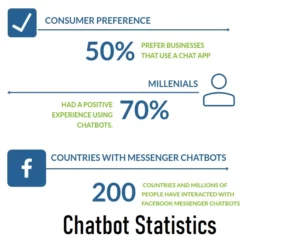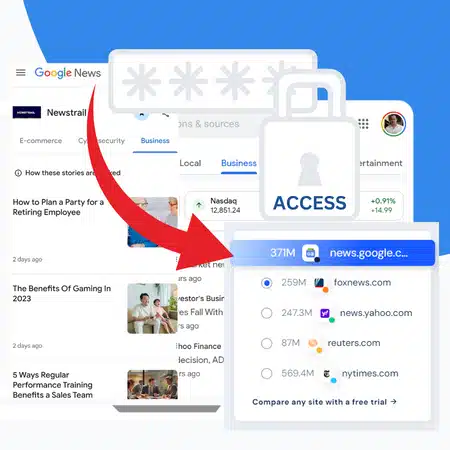A few seconds delay on a site can lead to a lost customer, a lost sale, or a click away from your content. Enter Google PageSpeed Insights: a tool from the tech giant, Google, designed to offer insights into how well your website is performing speed-wise and where it might be lagging.
The Need for Speed in Today’s Digital World
Now, you may wonder, why all the fuss about speed? First, from a user’s perspective, nobody likes to wait. In an age of instant gratification, speed is king. A fast-loading site ensures a smooth user experience, keeping visitors engaged and less likely to bounce off your site.
But there’s more to it. Search engines, especially Google, give weight to website speed in their ranking algorithms. A faster website doesn’t just mean happier visitors; it can also lead to higher placements in search results. Think about it: if search engines are in the business of providing the best answers as quickly as possible, why would they favor a slow site?
Digging into Google PageSpeed Insights
Google PageSpeed Insights is a free tool that gives a peek into how your website performs, especially concerning loading times. It provides actionable feedback, helping website owners pinpoint areas that need improvement. You can run a Google Page Speed Test here to gauge qualitative factors – or use the Page Speed Insights Official page from Google.
Metrics That Matter: Core Web Vitals and Beyond
Google PageSpeed Insights evaluates several elements of a site, but among the most talked about are the Core Web Vitals. These are a set of metrics Google considers crucial in evaluating the user experience of any web page.
Largest Contentful Paint (LCP)
This metric gauges how long it takes for the main content of a page to load. In simpler terms, it measures the time it takes for the major chunk of your content to appear on screen. A faster LCP means your visitor gets to see the essence of your page without any annoying wait.
First Input Delay (FID)
Ever clicked on a link on a page and had to wait what seemed like forever for something to happen? FID measures the time between when a user interacts with your site (like clicking a link or tapping on a button) to when the site responds to that action. A low FID gives users the feeling that your site is responsive and under their control.
Cumulative Layout Shift (CLS)
Imagine reading an article and suddenly, the content moves or jumps, causing you to lose your place. Annoying, right? CLS measures the visual stability of your page, ensuring that users have a smooth reading or browsing experience without unexpected layout changes.
While Core Web Vitals are crucial, Google PageSpeed Insights also looks at other factors like site speed, optimization levels, and mobile responsiveness, among others.
Why Strive for a Top Score?
Achieving a good score on Google PageSpeed Insights isn’t just about bragging rights. It’s about offering the best user experience possible. A well-optimized, speedy site results in longer visits, reduced bounce rates, and, most importantly, happier users. And as we mentioned earlier, with speed playing a role in search rankings, it can also mean more organic traffic and better visibility in search results.
Key WordPress Speed Optimization Techniques
Here are actionable steps to boost your WordPress speeds;
Choose the Right Hosting
When you’re setting up a website, think of your hosting provider as the foundation of a house. A strong, reliable foundation ensures stability and longevity. In the digital space, this translates to faster loading times and fewer downtimes.
Shared Versus Dedicated Hosting
In layman’s terms, shared hosting is like renting a room in a shared apartment. You have your own space, but you share resources with other tenants. While this can be cost-effective, it may not always provide the fastest speeds, especially when traffic spikes. On the other hand, dedicated hosting is like having your own house. All resources are exclusively yours, ensuring more stability and speed. The choice between the two boils down to your site’s requirements and budget.
Embracing Local Servers and CDN
Ever noticed how sometimes a website loads faster when you’re in one location compared to another? That’s where local servers come into play. Hosting your site on a server close to your primary audience ensures faster load times for them. Additionally, Content Delivery Networks (CDN) distribute your site’s content across multiple servers around the world, serving users from the nearest point, ensuring consistent speeds regardless of their location.
Use Lightweight Themes and Plugins
The beauty of WordPress is its flexibility, thanks to an array of themes and plugins. However, this strength can be a double-edged sword if not wielded correctly.
Opting for Speed-Optimized Themes
Not all themes are created equal. Some come packed with features, animations, and flashy designs. While they might look appealing, they can slow down your site. Opting for a theme that’s streamlined for speed without unnecessary bloat is a smart move.
Managing Your Plugins
It’s easy to get carried away with plugins because there’s one for just about everything! Regularly updating your plugins ensures you’re using the latest, fastest, and most secure versions. Also, do a spring cleaning now and then; deactivate and delete plugins you no longer use. And always be cautious of plugin bloat – having too many plugins can weigh your site down.
Image Optimization
A picture is worth a thousand words, but it shouldn’t take a thousand seconds to load! Images often account for most of the downloaded bytes on a web page.
Understanding Image Sizes
Uploading large, high-resolution images can drastically slow down your site. Resizing images to the exact dimensions needed on your site, and not a pixel more, can make a world of difference.
Compress Without Compromising
There are numerous tools and plugins designed to reduce image file sizes without sacrificing quality. Tools like TinyPNG or plugins like Smush can help automate this process, ensuring your visuals remain sharp without slowing things down.
Responsive Images for Today’s Devices
With a multitude of devices and screen sizes, it’s essential your images adjust and load efficiently. Using responsive images ensures the right image size is delivered based on the user’s device, be it a desktop, tablet, or smartphone.
Minify and Combine CSS and JavaScript Files
These might sound like technical jargon, but in essence, they’re about making your site’s code more efficient.
Minification
It’s a process of removing all unnecessary characters from code without changing its functionality – think of it as decluttering. This reduces the size of your CSS and JavaScript files, leading to faster load times.
Automation is Key
Manually minifying files can be tedious. Fortunately, several plugins and tools can handle this task for you, ensuring your site’s code remains sleek and speedy without constant oversight from you.
Caching: What It Is and Why It’s Crucial
Ever wondered how some websites seem to load almost instantly, giving you the information you crave without the wait? That’s caching working its magic. Let’s break this down.
Understanding Caching for Rapid Page Loads
In its simplest form, caching is like taking a snapshot of your web page and storing it for quick access. When a visitor lands on your site, the cached (or stored) version is served instead of generating the page from scratch, cutting down on load times.
Top WordPress Caching Plugins
There’s a range of plugins designed to simplify caching for WordPress users. Some of the most effective include W3 Total Cache and WP Super Cache. By setting up one of these, you’re allowing your site to serve pages faster and more efficiently.
Reduce External Scripts and Requests
Think of your website as a bustling city. Every external script or request is like a car driving into the city. The more cars you have, the more traffic jams you might experience.
Being Mindful of Fonts and Styles
While custom fonts can give your site a unique flair, overdoing it can slow things down. It’s wise to stick to essential fonts and styles, ensuring they’re loaded efficiently.
Streamlining Social Media and Embeds
It’s great to have social media integration, but overloading your site with widgets can hinder its speed. Instead, focus on crucial social platforms and consider using streamlined sharing buttons rather than heavy widgets.
Taming Third-party Scripts
Ads, trackers, and analytics are useful, but too many can bog down your site. Prioritize scripts that add value to your site and audience, and be selective about what you integrate.
Optimize Your Database
Your database is like the library of your website, storing content, comments, and other critical data. Over time, like any library, it can become cluttered.
Committing to Regular Cleanups
Deleting spam comments, old drafts, and transient options not only tidies up your database but also ensures it runs efficiently, contributing to faster page loads.
Database Optimization Tools
Plugins like WP-Optimize and Advanced Database Cleaner automate the process of cleaning and maintaining your database, ensuring it’s always in tip-top shape.
Implement Lazy Loading
Have you ever scrolled through a web page and noticed images loading just as you get to them? That’s lazy loading in action.
Decoding Lazy Loading and Its Perks
Instead of loading all images and content as soon as a page is accessed, lazy loading only loads elements when they’re about to be viewed. This means quicker initial page loads, saving bandwidth, and improving user experience.
Incorporating Lazy Loading into Your Site
Several plugins make adding lazy loading to your WordPress site a breeze. Plugins like a3 Lazy Load and BJ Lazy Load can be easily integrated, offering your visitors a smoother browsing experience.
Using Google PageSpeed Insights Effectively
While it’s tempting to view website optimization as a one-time task, the truth is that the digital space is ever-evolving. Your content grows, plugins get updated, and user behaviors change. As a result, regularly checking your site’s performance is essential. For most sites, a monthly check using Google PageSpeed Insights is a good baseline. However, if you’re in the midst of major site changes, more frequent checks—like weekly—can be beneficial.
Deciphering the Data: Interpreting Results and Action Steps
Once you run your site through Google PageSpeed Insights, you’ll be presented with a lot of data. While it might seem overwhelming at first, knowing how to interpret the results can give you a clear action plan.
Performance Score: This is a general indicator of how well your site is doing. A score above 90 is considered good, but aim for as close to 100 as you can get!
Opportunities: This section provides suggestions for improving your site’s performance. The estimated savings indicate how much faster your site could be if you implement these suggestions. Focus on the ones that offer the most significant savings first.
Diagnostics: Think of this as a health report for your site. It gives more technical insights into what might be causing slowdowns. If you’re not tech-savvy, this is a great section to show to your web developer.
Steering Clear of Common Missteps
With any tool, there’s room for user error, and Google PageSpeed Insights is no exception. Here are some pitfalls to avoid:
Over-Optimization: It’s essential to strike a balance. While it’s great to implement suggestions from the tool, remember to prioritize user experience. If a change makes your site faster but less user-friendly, it might not be worth it.
Assuming a Perfect Score Equals Perfection: Even if you achieve a score of 100, there’s always room for improvement. Also, user experience isn’t solely about speed. Focus on overall site quality, usability, and content.
Not Considering Mobile: With the rise of mobile browsing, ensure that your site performs well on both desktop and mobile. Google PageSpeed Insights provides separate scores for each, so don’t neglect either.
The speed of your WordPress site plays a pivotal role in your online success. It influences user satisfaction, search ranking, and overall site engagement. Google PageSpeed Insights serves as a valuable assistant in your quest for a faster, more efficient website.
By regularly assessing performance, making informed decisions based on its feedback, and staying aware of potential pitfalls, you’re well on your way to providing an optimal browsing experience. So, keep an eye on those metrics and make adjustments as needed, ensuring your site remains a top performer in the digital race.










